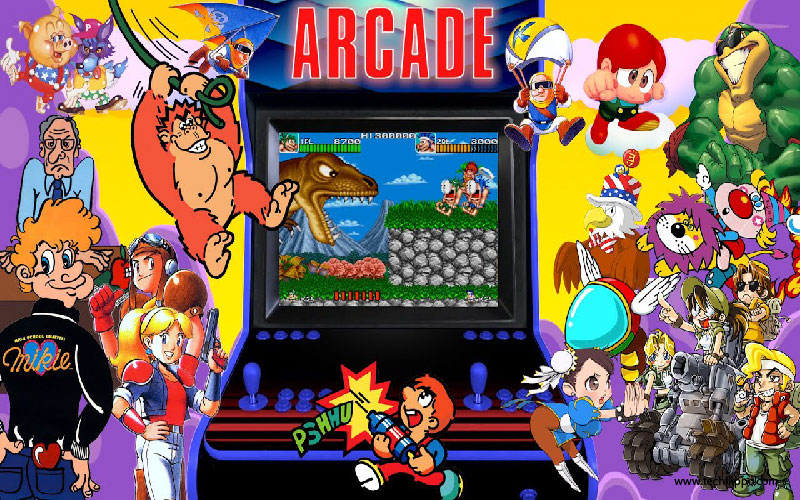Top 10 Iconic Arcade Games That Shaped Gaming History
Arcade games hold a special place in the hearts of gamers everywhere. These pixelated adventures brought friends together, ignited fierce competition, and transformed living rooms into bustling arcades. From those dimly lit corners filled with buzzing machines to brightly colored cabinets inviting players to try their luck, arcade gaming has left an indelible mark on popular culture.
The rise of arcade games marked the beginning of a new era in entertainment. Players dropped coins into machines for just one more chance at glory. Each game offered unique challenges and immersive experiences that captivated audiences across generations. Many titles not only became household names but also shaped the future of gaming itself.
Let’s take a nostalgic journey through ten iconic arcade games that have forever altered the landscape of gaming history. Whether you’re a seasoned gamer or simply curious about this vibrant past, these classics are sure to spark some fond memories.

Space Invaders: The Game That Started It All
Released in 1978, Space Invaders revolutionized the gaming industry. This simple yet addictive game captivated players with its straightforward mechanics and challenging gameplay.
Players controlled a laser cannon at the bottom of the screen, shooting at waves of descending aliens. Each invader that was eliminated increased their speed, creating an exhilarating sense of urgency.
Its pixelated graphics and catchy sound effects became iconic. The game’s popularity sparked a surge in arcade establishments worldwide.
Suddenly, video games were no longer just a novelty; they turned into cultural phenomena. Space Invaders laid the groundwork for future genres and inspired countless developers to innovate further.
Today, it stands as a testament to how one game can change an entire landscape, influencing generations of gamers and designers alike.
Pac-Man: A Cultural Phenomenon
Pac-Man burst onto the scene in 1980, quickly becoming a symbol of gaming culture. Its simple yet addictive gameplay captivated players worldwide. Navigating mazes while munching on pellets and avoiding colorful ghosts became an unforgettable experience.
The character itself was revolutionary. With its iconic yellow circle and whimsical design, Pac-Man appealed to audiences of all ages. This made it accessible, drawing in not just gamers but also casual players who enjoyed its charm.
Merchandising followed suit with toys, clothing, and even animated series featuring this beloved character. The music from the game became instantly recognizable, embedding itself into pop culture.
Championships started popping up as players competed for high scores. Pac-Man transformed arcades into social hubs where people gathered to share strategies and experiences. It laid the groundwork for multiplayer competition that continues today in various forms.
Donkey Kong: The Rise of Jumping Games
Donkey Kong burst onto the scene in 1981, introducing players to a new kind of hero. Instead of shooting enemies or racing against time, gamers were challenged to jump over obstacles while rescuing a damsel in distress.
This game marked a shift in how arcade games could engage audiences. The thrill of leaping from platform to platform became an instant hit. Players developed skills and strategies centered around timing and precision.
The character dynamics also played a crucial role. Mario, initially known as Jumpman, took center stage, paving the way for future adventures. Meanwhile, the imposing figure of Donkey Kong added layers to gameplay that kept players coming back.
As one of the first jumping games ever created, Donkey Kong laid essential groundwork for countless titles that followed. It redefined what it meant to navigate virtual worlds through jumps and climbs—a legacy still celebrated today.
Tetris: A Simple Classic that Stands the Test of Time
Tetris is more than just a game; it’s a cultural icon. Created by Russian programmer Alexey Pajitnov in 1984, this puzzle game quickly captured the hearts of players worldwide.
Its simple mechanics are deceptively addictive. Players rotate and arrange falling blocks to create complete lines, which then disappear. The satisfaction of clearing rows brings an unparalleled sense of achievement.
The game’s charm lies in its elegant design. With minimal graphics and catchy music, Tetris proves that less can be more. It transcends generations, appealing to both young gamers and nostalgic adults alike.
Tetris has inspired countless adaptations across platforms—from mobile devices to gaming consoles. Its competitive scene remains vibrant with tournaments held globally.
As new games emerge each year, Tetris continues to thrive—a testament to its enduring appeal and timeless gameplay. It’s no wonder it holds a special place in the hearts of many arcade enthusiasts.

Street Fighter II: The Birth of Competitive Fighting Games
Street Fighter II burst onto the gaming scene in 1991, changing everything for fighting games. It introduced a diverse cast of characters, each with unique moves and backgrounds. Players could now choose their fighter based on personal style.
The game’s mechanics were revolutionary. Special moves and combos added depth, allowing players to master their favorite characters. The thrill of one-on-one battles kept gamers coming back for more, fostering a competitive spirit like never before.
Arcades transformed into battlegrounds as friends gathered to prove their skills against each other. Tournaments emerged, setting the stage for eSports today. Fans formed communities dedicated to strategies and character lore.
Street Fighter II didn’t just create a genre; it ignited a cultural phenomenon that still resonates in gaming culture today. Its legacy continues through sequels and spin-offs, proving that its impact is far from over.
Super Mario Bros.: Revolutionizing Platformers
Super Mario Bros. transformed the gaming landscape when it hit arcades in 1985. It introduced players to a vibrant world filled with imaginative characters and challenging levels, setting new standards for platformers.
The game’s innovative side-scrolling design allowed players to navigate vast landscapes rather than static screens. Jumping on enemies became an iconic mechanic that defined gameplay.
Mario wasn’t just a character; he was a symbol of adventure and creativity. The catchy music and colorful graphics drew gamers in, making each level feel like a unique experience.
Power-ups added excitement, offering new abilities and strategies as players progressed through the Mushroom Kingdom. Collecting coins and defeating Bowser became essential tasks that kept players engaged for hours.
This title laid the groundwork for countless sequels and inspired future game developers to explore imaginative storytelling within platform gaming. Super Mario Bros. remains a timeless classic cherished by fans around the globe.
Mortal Kombat: Controversial, but Revolutionary
Mortal Kombat emerged in 1992 and quickly became one of the most talked-about arcade games. It pushed boundaries with its graphics, gameplay, and a level of violence that shocked many players. The game featured digitized characters and stunningly realistic animations for its time.
What set Mortal Kombat apart was not just its brutality but also its unique fighting mechanics. Players could execute special moves, combos, and finishers known as “Fatalities.” These dramatic finishing moves became iconic elements of the franchise.
Despite controversy over its graphic content leading to debates about video game violence, Mortal Kombat charted new territory in gaming culture. It paved the way for more mature themes in games while influencing countless sequels and spin-offs.
The legacy of Mortal Kombat is undeniable; it has spawned movies, TV adaptations, merchandise, and even esports tournaments. This groundbreaking title solidified itself as an essential part of gaming history—one that continues to capture both fans’ hearts and minds today through nostalgia-filled experiences at arcade cabinets worldwide.
Arcade games have left an indelible mark on entertainment history with their ability to bring people together for friendly competition or solo challenges. Each title mentioned showcases creativity that transcends generations while reminding us why these classics are worthy of celebration!